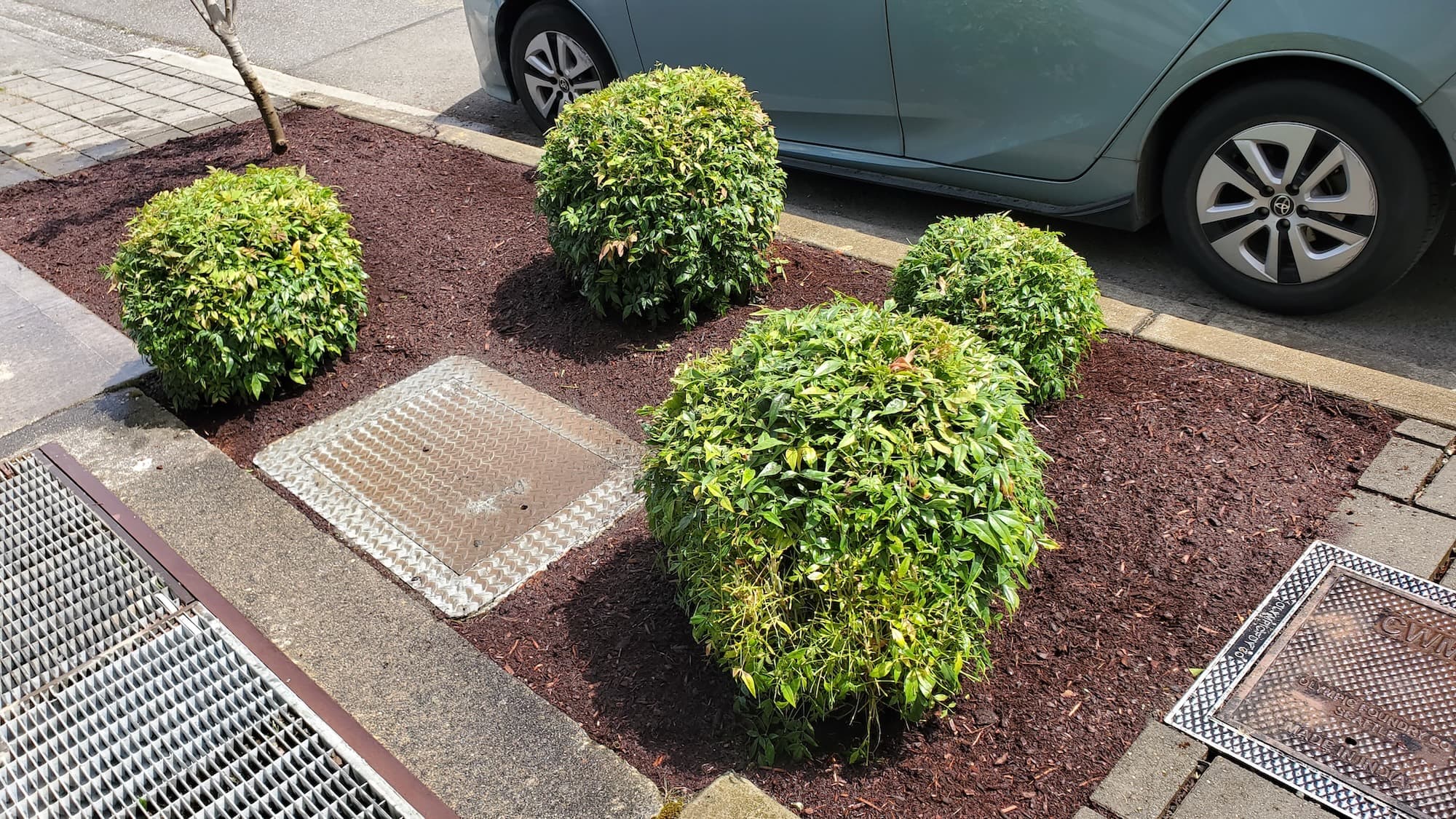West Seattle Top Hedge Trimming
Homeowner’s Issue
West Seattle yards face a specific set of problems: heavy winter rain, compacted glacial-till soils, and a lot of shade near mature trees. That mix breeds moss, ivy, and rampant basal shoots on common hedging plants. Sloped lots around High Point and Fauntleroy trap runoff, so poorly trimmed hedges can hide drainage issues and trap extra moisture against foundations. On sunny bluff-front properties by Alki or Admiral, hedges get brisk afternoon sun and wind—plants scorch differently there and need different cutting windows.
HOAs and neighbors here expect tidy sightlines for narrow streets and steep driveways; overgrown hedges can violate visibility triangles or create trip hazards. The seasonal growing pattern is long wet seasons (Oct–May) and compressed growth spurts in late spring/early summer when trimming matters most. Soil is often acidic and low in oxygen—so clean cuts, mulch, and soil–surface care do more for health than aggressive chemicals. We work with those realities: pruning to improve airflow, shaping for curb appeal, and using only sustainable, non-herbicidal methods so your hedge recovers faster and supports local pollinators.
Our Quality Service
We assess species, soil, and exposure before cutting. Using hand shears, battery hedge trimmers, pole pruners, and slow, deliberate cuts, we retain natural form or create clean, formal shapes. Typical jobs take 1–4 hours for standard runs; large properties or major rejuvenation can require multiple visits. We schedule major pruning in late winter or early summer depending on plant type and incorporate staging for steep or restricted-access sites.
We always:
- Avoid herbicides; use organic weed control and manual removal.
- Improve drainage where hedges obscure flow.
- Recommend mulch and compost top-dressing to improve soil biology.
Benefits: safer sightlines, lower maintenance, better curb appeal, and longer-lived shrubs.
What’s Included
- Site assessment and species-specific pruning.
- Trim, thin, and shape to agreed profile.
- Debris pickup and haul-away or green-bin sorting.
- Light weeding at hedge bases and optional compost top-dress.
Options / Upgrades:
- Mulch + fabric (if requested) for moisture retention.
- Organic soil amendment and top-dress.
- Ivy/moss manual removal and root extraction.
- Haul-away vs. green-bin drop-off.
Before & After / Expectations
Expect noise and clippings during the job; we bag and haul or separate for city green-bin pickup. For large rejuvenation cuts we allow 2–6 weeks for regrowth and follow-up touch-ups. Access matters—narrow alleys and steep stairs add time. After pruning, keep beds mulched, water new cuts during dry summer windows (one deep soak weekly for shrubs), and watch for weed pressure in early spring. Moss and ivy are persistent here—manual removal and improved airflow cut recurrence.
FAQs
- Q: When’s best to trim?
A: Late winter for structural cuts, late spring for light shaping. Species-dependent—we advise per-visit. - Q: Do you use herbicides?
A: No. We use physical removal, organic controls, and cultural fixes only. - Q: How long will my hedges take to recover?
A: Light trims recover in 2–6 weeks; major cuts can take one growing season for full fill-in. - Q: Can you work on steep or alley-access properties?
A: Yes—expect added time and possible staging fees for tricky access.
Call to Action
West Seattle homeowners: if your hedges are blocking views, streets, or curb appeal, book a quick estimate. We offer prompt scheduling, realistic timelines, and local know-how around Admiral, Alki, and Lincoln Park. Free photo quotes available; on-site estimates when needed.
Email: neatandtidyseattle@gmail.com
Phone: 206-538-9344
Licensed • Insured • Sustainable methods only — no herbicides.










